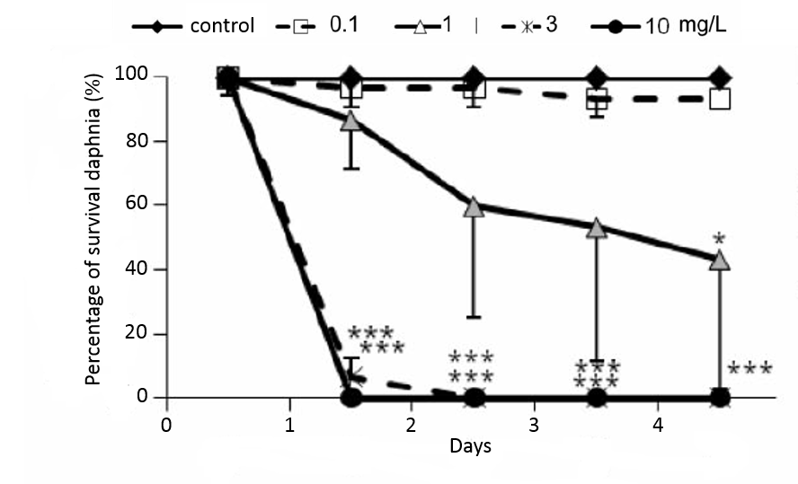Experiment example

Percentage of survival daphnia magma exposed to nanosilver as the function of time for several concentrations [B.K. Gaiser et al., Environmental Toxicology and Chemistry 31 (2012) 144-154].
B.K. Gaiser et al. [B.K. Gaiser et al., Environmental Toxicology and Chemistry 31 (2012) 144-154] have shown that the mortality of daphnia magma exposed to silver nanoparticles is function of their concentration:
- 1 day of nanoparticle exposure with concentrations of 3 and 10 mg/l are sufficient to kill 50 % of exposed organisms, 100 % after 1,5 day,
- 4 days are necessary to kill 50 % of exposed organisms for a concentration of 0,1 mg/l.


